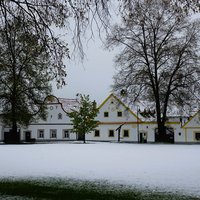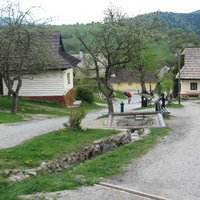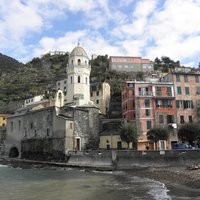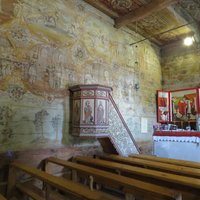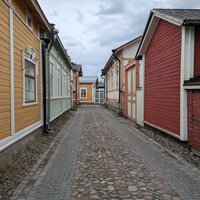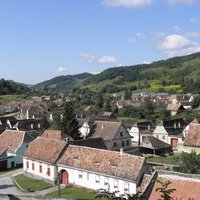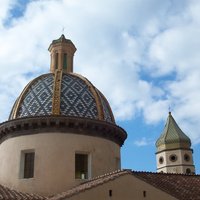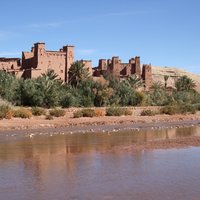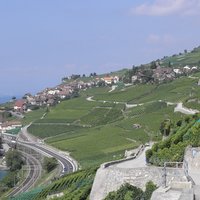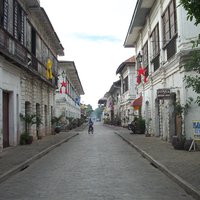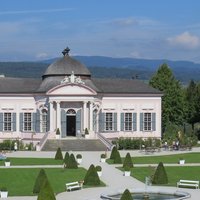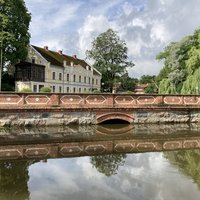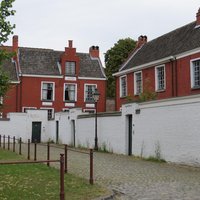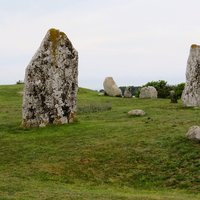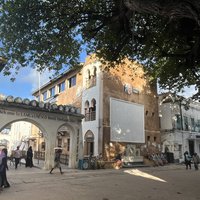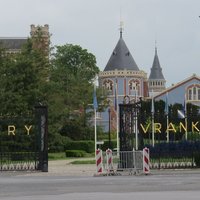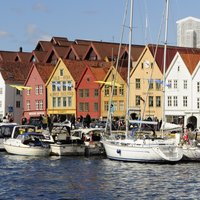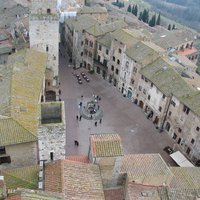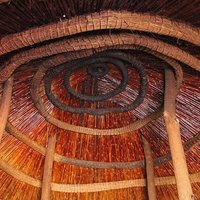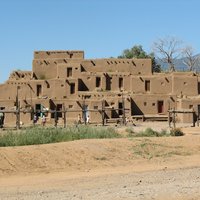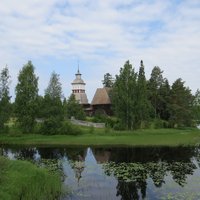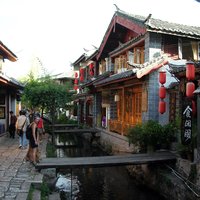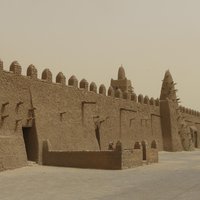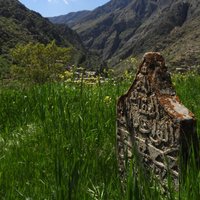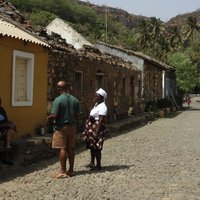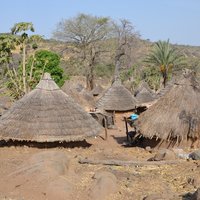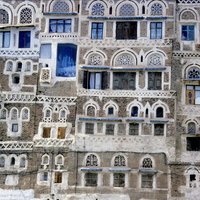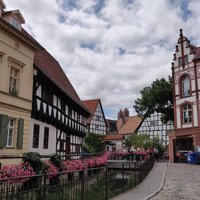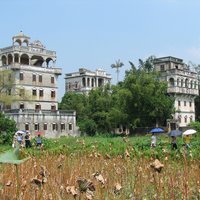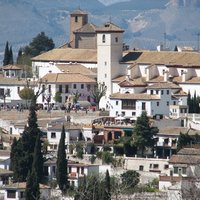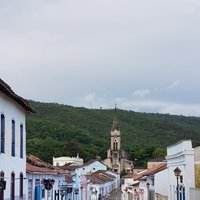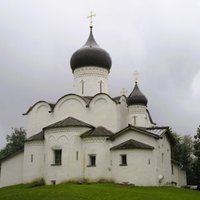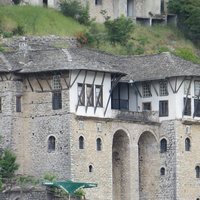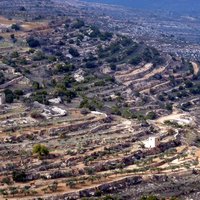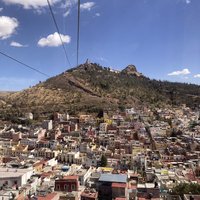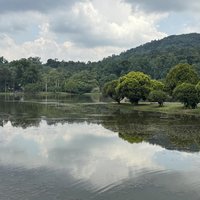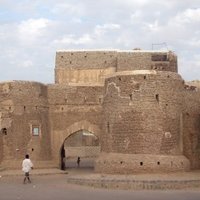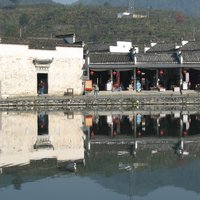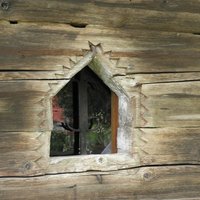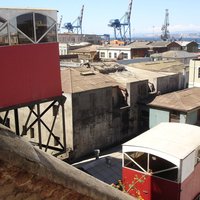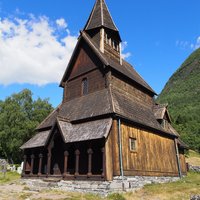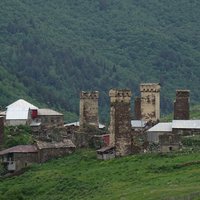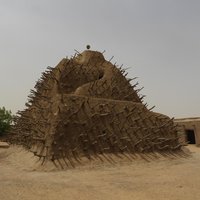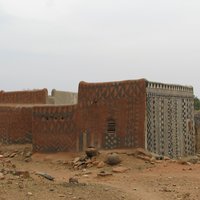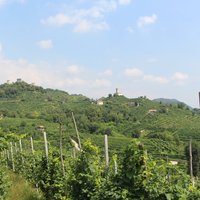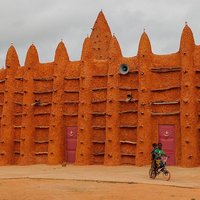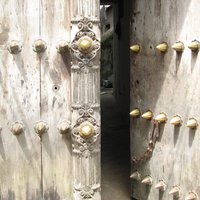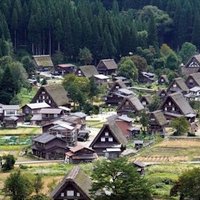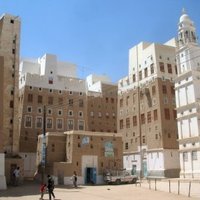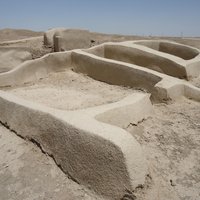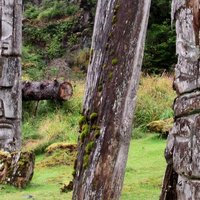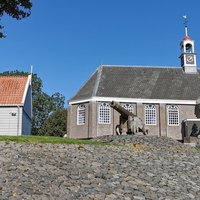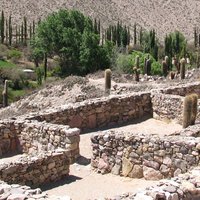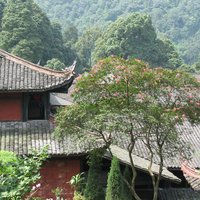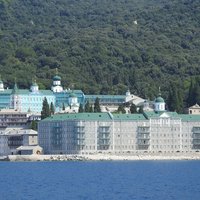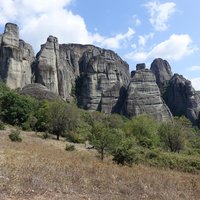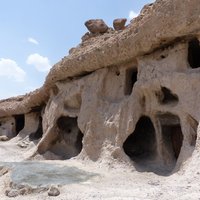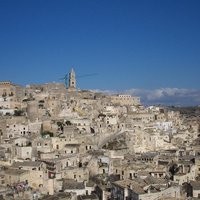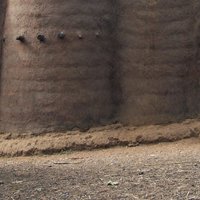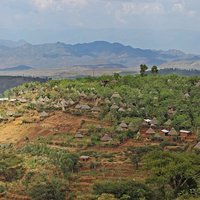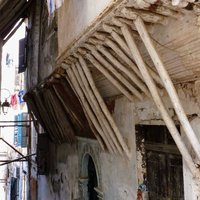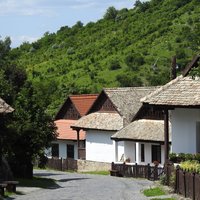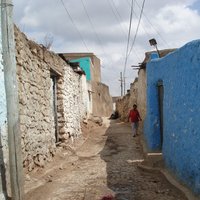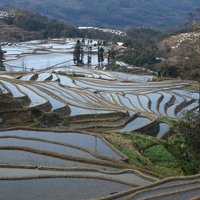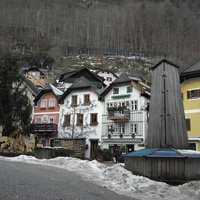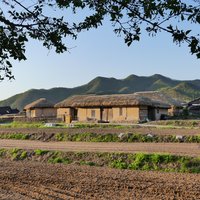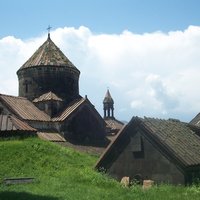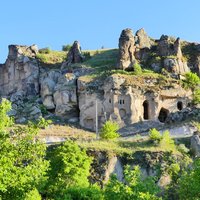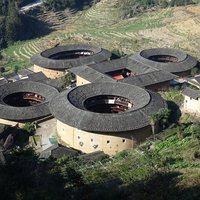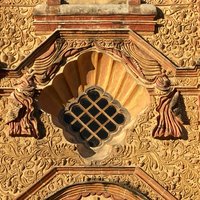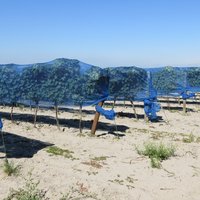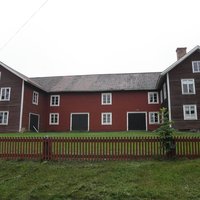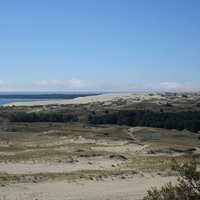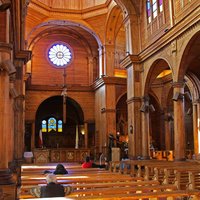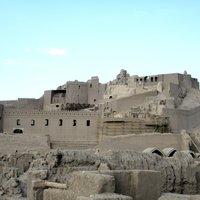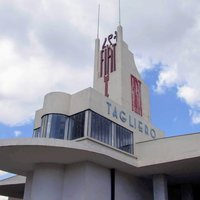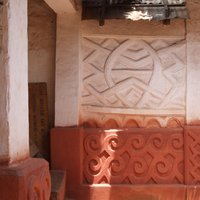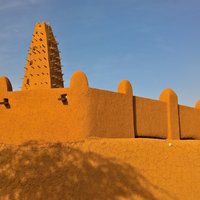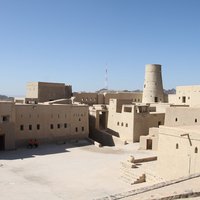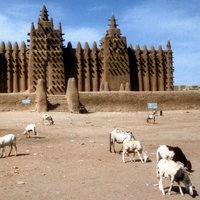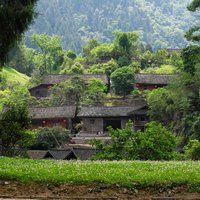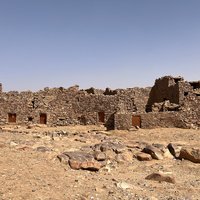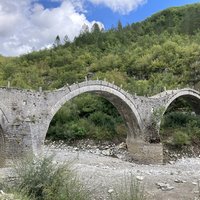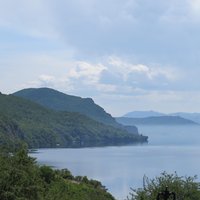Connected Sites
-
-
-
Manarola and Corniglia
-
-
-
-
-
"Most of the buildings scattered over the plain are simple; they are built using local and natural materials, and are used as homes or family farms."
-
dignified casonas, characteristic well-proportioned vernacular houses (AB ev)
-
-
Chexbres
-
the houses follow the typical plan of the tradional Bahay Kubo, with the second floor being the only living space. Most of the houses employ wood as one of the major materials in the construction. Ventanillas (lower sliding ventilators) only happen to manifest in the Philippines being a unique house feature.
-
its Taoist shrines and temples are built in Sichuan vernacular architecture
-
The entire Wachau with its historic and vernacular buildings, with the picturesquely interrupted hill ranges on either side, with the river in its midst, is a big and lively Gesamtkunstwerk (nom file)
-
"traditional local log architecture" (OUV)
-
The "architectural form [of the buildings] takes its inspiration from the traditional architecture of the region, using its materials, proportions, and forms as appropriate." "The Flemish béguinages demonstrate (...) a combination of religious and traditional architecture in styles specific to the Flemish cultural region." (AB Ev) - Beguine houses are part of urban vernacular architecture. (Nomination file, p. 18)
-
a mixture of vernacular regional and high-style architecture (AB ev)
-
-
"the vernacular buildings are internally decorated with painted ceilings, large niches (madaka), small niches (zidaka), and pieces of Chinese porcelain." (OUV)
-
"the historical chalk hillsides of Hautvillers, with the village at the top, and its landscape and vernacular heritage" (AB Ev) - The hillsides combine a landscape and vernacular heritage representative of the management of the Champagne vineyard, the grape supply system and the production of winegrowers and cooperatives. (Nomination file, p. 25)
-
-
-
-
-
-
-
-
"The cultural landscape made up of villages of steep-slope vernacular architecture" (AB Ev – ICOMOS)
-
-
traditional architecture (AB ev)
-
-
"The importance of the town rests on three main elements: the preservation of the medieval street pattern, the wealth of urban vernacular buildings, especially timber-framed houses of the 16th and 17th centuries, and the important Romanesque collegiate church of St Servatius." (AB Ev)
-
: Some dwellings conserve the characteristic traits of the typical 19th-20th century Kongo house (Nzo). Built on rubble foundations, with earthen or brick walls (the brick may be sun-dried or fired); they are long houses with two main rooms under a pitched roof (originally covered with straw). Colonial elements were added (verandas, pillars), and later industrial elements (corrugated metal sheet) replaced the local materials. (AB ev)
-
original, single-storey, vernacular village houses (AB ev)
-
The residential district of the Albaycín is a rich repository of Moorish vernacular architecture (AB ev)
-
"vernacular techniques"
-
"The school utilized a limited set of decorative techniques and architectural elements, illustrating a synthesis of vernacular styles brought into urban and monumental contexts" (OUV)
-
Although there are almost no remains of houses, some thatched ritual huts remain, for example, at Kaya Fungo (AB ev)
-
vernacular housing (AB ev)
-
The main manifestations of vernacular buildings within the property are the stone watchtowers, manatir. (AB ev)
-
Vernacular architecture also provides a set of interesting elements, some of which have been inventorised, such as doors and their accessories. (AB ev)
-
"Tuapurie: ceremonial centres notable for their vernacular architecture" (AB ev)
-
Malay Traditional House, part of FRIM collection of traditional timber houses, "lower-grade labourers were accommodated in temporary wooden houses built in local kampung style"
-
-
-
-
-
-
-
"From a typological point of view, the nominated property may be categorised under 'archaeological heritage', 'military properties' and even, when considering the important evidence of a traditional Nordic building typology symmetrically-ordered within the fortresses, 'vernacular architecture'." (Nomination file, p. 194)
-
The workers houses are in the traditional vernacular idiom(AB ev)
-
"the city is characterized by a vernacular urban fabric" (unesco website)
-
-
-
-
-
-
"The rural cottage (...) is more commonly found in the core zone. It does not reflect established formal canons but is often a sum of various parts developed over time mirroring the fortunes of the owner family. (...) In terms of materials, local stone, due to its extreme variability, is the most distinctive identifying feature of these buildings. Clustered settlements and isolated houses are an important part of the local landscape: having been abandoned and underutilized, they are wholly preserved, and are still today used to fulfill agricultural functions, or are often converted into cellars." (Nomination file, p. 46)
-
-
"The Omani Arabics used coral for masonry, ..., and to make lime mortar through a process of heating coral to high temperatures until it becomes lime powder. Indians and Europeans introduced architectural forms to contend with the tropical climate, including rooftop terraces and sloped, corrugated metal roofs which perform better during the dual-monsoon seasons than the Arabic flat roofs"
See www.acsa-arch.org
-
-
-
mud brick architecture (AB ev)
-
large cedar long houses, together with a number of carved mortuary and memorial poles, illustrate the art and way of life of the Haida (AB ev)
-
-
The valley also displays several churches and chapels and a vibrant vernacular architectural tradition. (Icomos
-
its temples are built in Sichuan vernacular architecture
-
a treasury of vernacular architecture (UNEP-WCMC)
-
-
cave dwellings carved out of the soft rock (kamar)
-
-
-
-
The Algiers Kasbah preserves very interesting traditional Arab-Mediterranean houses in which the ancestral Arab lifestyle and Moslim customs have blended with other architectural traditions. (AB Ev)
-
-
-
traditional townhouses
-
The traditional vernacular buildings have walls built of rammed earth, of adobe bricks or of earth and stone under a tall, hipped, roof thatched with straw that gives the houses a distinctive 'mushroom' shape. (whc)
-
-
-
blending of elements of Byzantine ecclesiastical architecture and the traditional vernacular architecture of the Caucasian region (AB ev)
-
-
A remarkable domestic architectural style distinguishes Ghadames as a unique site among a series of pre-Saharan cities and settlements (AB ev)
-
-
"The richly decorated church facades are of special interest as they represent an example of the joint creative efforts of the missionaries and the Indios. The rural settlements that grew around the missions have retained their vernacular character." (unesco website)
-
"The remarkable rural architecture of the villages surrounding the lake "
-
-
-
"vernacular wooden architecture" (AB ev)
-
"The typical architecture in the urban settlements is a fusion between the Spanish cultural patterns and the indigenous culture of the region adapted as well to the coffee growing process, through for example their sliding roofs. Houses function as both dwelling units and centers of economic activity, with walls built in the traditional, more flexible and dynamic 'bahareque' constructive system, and covered by a layer of bamboo well known for its resistance and malleability. Over fifty percent of the walls are still built using this traditional method." (OUV)
-
-
-
the most representative example of a fortified medieval town built in vernacular technique using mud layers (AB ev)
-
vernacular styles from the highlands were adopted and assimilated by Italian architects, engineers and planners in the design of buildings and public space
-
-
vernacular mudbrick architecture (AB ev)
-
the fort and mud houses in the oasis
-
-
"The incorporation of local ethnic decorative patterns and motifs into the paving of streets and roads at Laosicheng, in the Tusi’s frieze on the memorial gateway at Tangya and in the fortified Feilong gateway at Hailongtun are specific examples of the influence of the local minorities on decorative treatment" (AB ev)
-
"The mosques .. are severe, without any form of decoration or flooring, and built entirely in local materials." (AB ev)
-
"its vernacular architecture of traditional stone building" (AB ev)
-
-
The region's culture reflects outstanding religious architecture from the 7th to 19th centuries, urban structures and vernacular architecture from the 18th and 19th centuries, all in Ohrid, and a concentration of archaeological remains some within Ohrid and others along the coast. (AB Ev)

